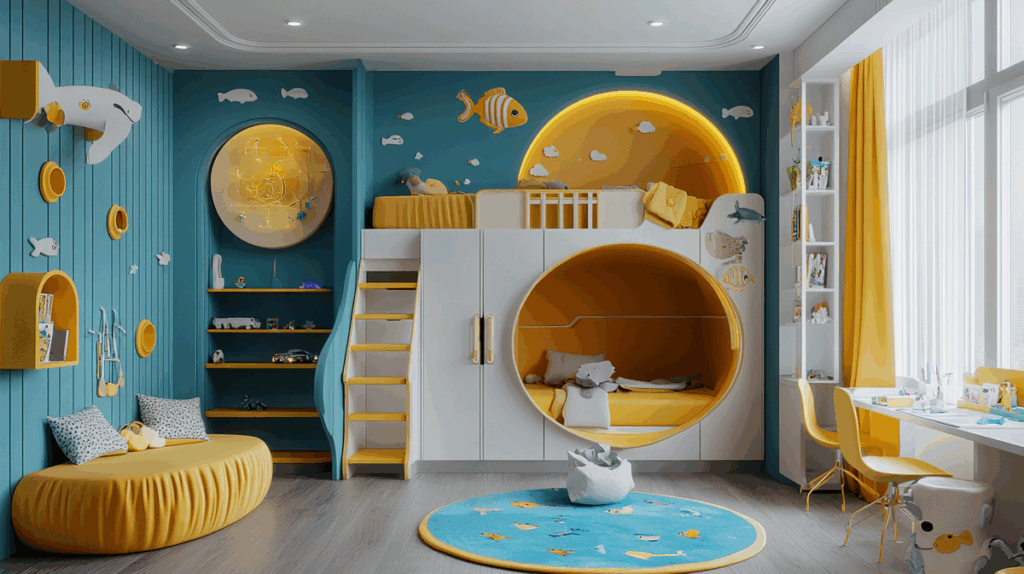Designing a child’s room is a delightful yet challenging task for many parents and caregivers. The room must be a safe haven, a place for rest, play, and learning, all while reflecting the child’s personality and needs.
Children’s furniture plays a crucial role in achieving this balance, offering functional and safe solutions tailored to the unique requirements of young ones. From choosing the right materials to ensuring the furniture grows with the child, there are numerous factors to consider.
This article delves into the world of children’s furniture, exploring how to create spaces that are not only aesthetically pleasing but also practical and secure for children.
Functional and Safe Solutions for Kids’ Rooms
When it comes to children’s furniture, functionality and safety are paramount. Parents often seek pieces that serve multiple purposes, such as beds with built-in storage or desks that can double as art stations. This multifunctionality is essential in maximizing space, especially in smaller rooms.
Moreover, furniture designed for children must adhere to strict safety standards to prevent accidents. Rounded edges, non-toxic finishes, and sturdy construction are just a few of the features that ensure a safe environment for kids.
One of the key considerations is the adaptability of the furniture. As children grow, their needs change, and their furniture should be able to accommodate these changes. Adjustable beds, desks, and chairs that can be modified in height or configuration are excellent investments. This adaptability not only extends the life of the furniture but also supports the child’s development by providing a comfortable and suitable environment for different stages of growth.
For those looking for innovative and high-quality children’s furniture, https://adekokids.co.uk/ offers a wide range of options that combine style, functionality, and safety. Their products are designed with the modern family in mind, ensuring that each piece is both practical and aesthetically pleasing.
Designing with Creativity and Personalization
Beyond functionality and safety, children’s furniture should also inspire creativity and reflect the child’s personality. Personalization is a growing trend, with many parents opting for custom pieces that incorporate their child’s favorite colors, themes, or characters. This not only makes the room more inviting but also encourages children to take ownership of their space.
Creative design elements can transform a simple room into a magical space. For instance, a bed shaped like a castle or a car can make bedtime more exciting, while a desk with a chalkboard surface can turn homework into a fun activity. These imaginative touches not only enhance the room’s aesthetic appeal but also stimulate the child’s imagination and creativity.
It’s important to strike a balance between creativity and practicality. While themed furniture can be exciting, it’s essential to ensure that it remains functional and safe. Opting for versatile pieces that can be easily updated or repurposed as the child’s interests change is a smart approach. This way, the room can evolve with the child, maintaining its appeal and functionality over time.
Eco-Friendly and Sustainable Choices
In today’s environmentally conscious world, many parents are seeking eco-friendly and sustainable options for children’s furniture. This involves choosing pieces made from renewable materials, such as bamboo or sustainably sourced wood, and those that use non-toxic paints and finishes. These choices not only benefit the environment but also ensure a healthier living space for children.
Sustainable furniture is often designed to be durable and long-lasting, reducing the need for frequent replacements. This durability is particularly important in children’s furniture, which must withstand the wear and tear of daily use. By investing in high-quality, sustainable pieces, parents can create a room that is both environmentally responsible and economically sensible.
Additionally, supporting brands that prioritize sustainability can have a positive impact on the industry as a whole. By choosing eco-friendly options, consumers can encourage more companies to adopt sustainable practices, ultimately leading to a wider availability of green products in the market.

